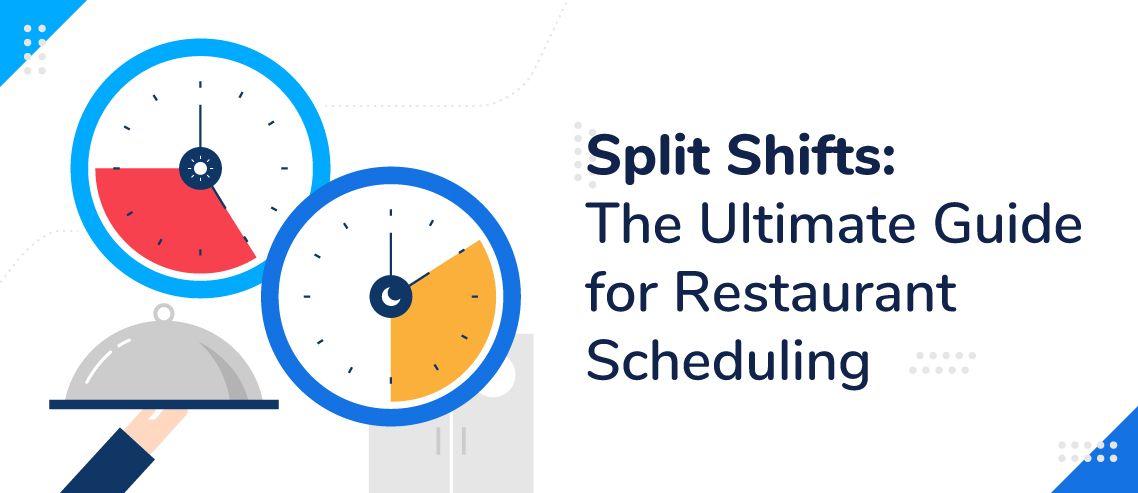18 Types of Work Schedules For Your Employees

Working long hours used to be a way of life for many businesses and their employees. However, not all jobs require such dedication. Some professions only require a fraction of the typical 40-hour workweek. These types of schedules for work are also known as “flextime,” and they can provide benefits for employees – such as better health and reduced stress – while also providing employers with a staff who has higher morale, lower absenteeism rates, and less turnover.
If the traditional 9 to 5 work pattern doesn’t work for your business, then you’re not alone. Many businesses have complex needs that fixed schedules can’t meet. Luckily, there are lots of different types of work schedules you can implement to unlock greater efficiency.
18 Types of Employee Work Schedules
Every business is unique and has its own needs. Not every business works on a simple nine to five schedule and instead will employ different work shifts to maximize their output.
1. Full-Time
This is the “traditional” type of work schedule. Employees will generally work a fixed amount of hours each week, following a repeated pattern (Monday to Friday, 9-5 for example) It’s up to the individual business to decide what constitutes full-time work, but it’s generally considered to be around 35 or more hours a week.
A full-time work pattern is generally the easiest to schedule because it doesn’t change from day to day or week to week.
2. Part-Time
A part-time schedule is for employees who don’t work the full 35-hours a week or however many hours the business decides constitutes full-time work. This type of work scheduling could utilize fixed hours, say Monday and Wednesdays, 2-6, or it could change depending on scheduling needs.
3. Fixed-Schedules
The fixed schedule is typified by Monday to Friday, 9-5. They’re set hours that employees repeat every day. In terms of scheduling, this is generally the easiest option for businesses to manage, but it doesn’t offer as much flexibility as other options.
4. Flextime Schedules
Flextime schedules allow employees and businesses to work out an alternative schedule that works best for both. This could mean an employee chooses to come in at 7 am so they get more time at home in the afternoon, or they might choose to come in an hour later so they miss rush hour traffic.
5. Rotating Shifts
Rotating shifts are popular in businesses that are open for long hours. For example, in a restaurant and bar, the opening hours might be 8 am to 2 am, which can create staffing challenges. Rotating work shifts allow people to switch between the different shifts, so a bartender might work morning shifts on Monday and Tuesday making coffees, and the night shift on Thursdays and Fridays.
6. Split Shift
Split shifts are one of the more unique types of shift work schedule, as they allow employees to go home and take a break in the middle of the shift. This is another schedule that’s popular in hospitality as it allows businesses to match customer demand, bringing staff in for the busy lunchtime period, and letting them go home during the afternoon lull before coming back for dinner service.
7. Seasonal
Some businesses are extremely seasonal. Seasonal schedules are commonly used in these businesses, allowing them to take on more staff during busy periods and cut the workforce back during the off-season.
8. 9/80 Schedule
The 9/80 schedule is a type of work schedule that sees employees work eight nine-hour shifts and one eight-hour shift over a two-week period. This could mean someone works nine-hour shifts from Monday to Thursday on week one followed by an eight-hour shift on Friday. On the second week, they would work four nine-hour shifts from Monday to Thursday, meaning they get the second Friday off.
9. On-Call
If an employee is on-call, then they’re not at work, but they must be contactable and come in if required. This type of work schedule is commonly associated with emergency services, but it’s a useful type of work schedule in any industry where demand is difficult to predict.
10. Overtime
Overtime is hours an employee works above and beyond the number of hours agreed in their contract. A standard policy is to pay overtime hours at 1.5x normal pay, but Individual businesses will have their own overtime policies.
11. Pitman Shift
The Pitman shift schedule is designed to give businesses 24/7 coverage. It splits employees up into four teams each working a set pattern of two days on, two days off, three days on, two days off, two days on, three days off.
12. DuPont Shift
Like the Pitman shift schedule, the DuPont shift schedule is designed to give businesses 24/7 coverage. Again, it splits the workforce into four teams, but this time shifts are 12 hours, and each team works four-night shifts before having three days off, then three-day shifts, followed by one day off, then three-night shifts, and then a week off.
13. Compressed
A compressed work schedule allows an employee to work a set number of hours, normally 35-40, but compress them into a shorter week. This might mean that instead of working five eight-hour shifts, they work four ten-hour shifts.
14. Freelance
Freelancers aren’t employees, but many businesses use their services to complement their workforce. Freelancers will agree to their own terms with the business and these arrangements can range from very flexible to more fixed hours.
15. Irregular Shift
Irregular shifts mean employees don’t work to a shift pattern. They may work nights one week, a mixture of day shifts and night shifts the next, and day shifts the next. This type of work schedule offers a lot of flexibility for employers, but it makes it difficult for employees to plan work around their lives.
16. Kelly Shift
The Kelly shift schedule is also designed to give business 24/7 coverage and it’s very popular with emergency services. It splits the workforce into three teams, each working one 24-hour shift followed by 24-hours off, a 24-hour shift, 24-hours off, a 24-hour shift, and then four days off.
17. Alternate
An alternate schedule is another way to refer to both compressed work schedules and flextime schedules.
18. No Set Schedule
Some businesses have no set schedules. In this type of work schedule, employees can work when they want, the only expectation is that they get through their workload. This gives employees a great deal of flexibility, but it’s not an option for many industries.
How to Streamline Work Schedules with Zoomshift
Whatever type of work schedule you choose, the important thing is that you implement it efficiently. This isn’t always easy, and it can prove to be a source of frustration for both employees and managers.
If you’re managing complex work schedules with spreadsheets or outdated software, then it’s likely to lead to breakdowns in communications, missed shifts, and poor employee morale. Zoomshift can help ensure this isn’t the case by making scheduling simple and effective.
When you use Zoomshift, you’ve got everything you need to make different types of work schedules all in one place. Smart templates allow you to save individual shifts and complete schedules to reuse and a seamless drag and drop system means you can create optimized schedules in minutes.
This syncs perfectly with time clocks that keep your employees accountable and make sure everyone gets paid accurately. You can also manage time-off requests and block time off where PTO isn’t available.
All of this means that you can use the work schedules that work best for your business and its employees without worrying about scheduling issues.
Key Takeaways
Making sure you have the right staff working at the right time is an essential part of the business. For many businesses, a fixed schedule works just fine, but for others, a slightly more complicated type of work schedule is required.
These 18 different types of work schedules can help unlock more efficiency, but the important thing is how you implement them. If they’re not managed well, then these schedules can lead to confusion and frustration, so make sure you have everything you need to make sure they’re implemented effectively.
Work Schedules Frequently Asked Questions (FAQs)
What Is the Most Popular Work Schedule?
The most popular work schedule is the full-time one, which typically involves working from 9 am to 5 pm, Monday through Friday. But the popularity of a work schedule varies based on the specific industry and organization type. For example, shift work is more common in industries like healthcare and manufacturing.
How Many Hours a Week Are Part-Time Employees Expected to Work?
Part-time employees work less than 30-35 hours per week, but the exact number of hours varies depending on the organization’s policies and the local labor laws.
Can Employers Change an Employee’s Schedule Without Notice?
It depends on the terms outlined in the employee’s contract or company policies. In general, employers are expected to give reasonable notice before making changes to an employee’s schedule, but there may be exceptions for emergencies or unexpected circumstances.
What Is the Main Advantage of the 9/80 Work Schedule?
The main benefit of the 9/80 work schedule is that it allows employees to enjoy a three-day weekend every other week. This is without reducing the total number of hours worked over the two weeks.
What Is the Purpose of a Rotating Shift?
The purpose of a rotating shift is to ensure that all shifts are covered equally and that employees have the opportunity to work different shifts. This helps with employee morale and provides necessary coverage for businesses that operate 24/7.
JD enjoys teaching people how to use ZoomShift to save time spent on scheduling. He’s curious, likes learning new things everyday and playing the guitar (although it’s a work in progress).



